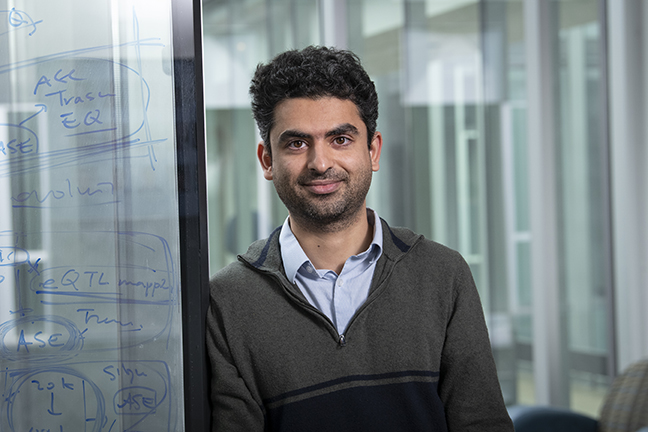CompBio's Mohimani Goes Big To Find New Antibiotics NIH New Innovator Award Supports Global Search of Microbial Communities
Byron SpiceTuesday, October 1, 2019Print this page.

Hosein Mohimani has a knack for finding ever-faster ways of searching giant databases for potential therapeutic drugs. Now, the computer scientist is trying a new approach in which the size of the databases isn't something to be conquered, but a feature he uses to his advantage.
"More data can make the search easier," said Mohimani, an assistant professor in the Computational Biology Department.
He'll be developing this bit of computational jiu-jitsu with the help of a National Institutes of Health Director's New Innovator Award. He is one of 60 young investigators receiving the $1.5 million award this year in recognition of their unusually creative, high-impact research efforts.
With the NIH support, Mohimani plans to analyze a wide variety of microbial communities — from humans and from other animals, but also from various soil and marine environments around the world. Each community might include thousands of microbes that produce potentially tens of millions of molecules, some of which act to protect their hosts. The idea is to find these protective molecules, which might prove to be novel antibiotics or anticancer agents.
Rather than search through databases for each microbiome, Mohimani plans to compare entire communities with each other. These comparisons should enable him to identify differences in the presence or relative abundance of microbes and their products. These patterns should then allow him to infer the activity of the microbes and identify candidate drugs.
The findings may also be a boon to precision medicine, he said.
"The interactions we detect may guide us in better understanding the microbial basis of disease," Mohimani explained, noting most diseases involve some increase or decrease in the abundance of special molecules.
Developing these databases for microbiomes has been an area of intense interest in the microbiology community for the past 10 years, Mohimani said. That is one factor that has made this approach possible, though he also will collaborate with Pieter Dorrestein at the University of California, San Diego, to generate additional databases for this study.
Mohimani also leverages his knowledge of computer science and electrical engineering to develop his techniques. "I really love the field," he said. When he was working on his Ph.D. in electrical engineering at UC San Diego, however, he took a course with Pavel Pevzner, a leader in computational biology, regarding computer algorithms that were applicable to biology. Looking for ways to have an impact on humanity, he asked Pevzner if he could work with him. From that point on, he was hooked on computational biology. Drug discovery, particularly of antibiotics, became his special passion.
"Antibiotic resistance kills millions of people every year worldwide," he said. "Based on current trends, deaths from antibiotic resistance will surpass those of cancer by 2050. That makes it imperative to develop new methods to discover new antibiotics."
That's just the type of project that is the focus of the NIH's High-Risk, High-Reward Research Program, of which the New Innovator Award is a part. It is funded through the NIH Common Fund, which seeks to close gaps in the research enterprise that are of great importance and require collaboration across the agency to succeed. The program awarded 93 grants this year for about $267 million over five years.
With existing technology, each new antibiotic discovery costs millions of dollars, and getting that drug to market can costs billions, Mohimani said. The new technique he is developing might be one way to make that drug discovery pipeline faster and cheaper.
"The goal of my lab is to make antibiotic discovery a high-throughput, low-cost process," he added.
Byron Spice | 412-268-9068 | bspice@cs.cmu.edu<br>Virginia Alvino Young | 412-268-8356 | vay@cmu.edu
